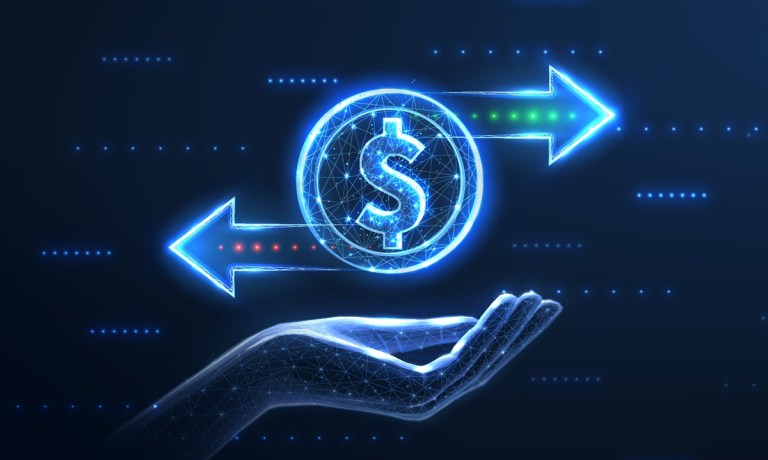
The latest business-to-business (B2B) payments innovations are turning personalization into the gold standard of payment evolution.
That’s what PYMNTS learned from some of the payments industry executives we spoke to for a new series, “B2B Payments: Outlook 2024.”
Call it the commercial currency of convenience.
The insiders told us that personal touches are increasingly transforming transactions into tailored experiences, helping drive end-user retention and customer lifetime value, even across B2B engagements traditionally defined by net terms and paper checks.
After all, outside of the signature line there’s nothing personal about a paper check — and in today’s macro environment, just waiting for it to arrive and then clear can be nothing short of personally aggravating for businesses.
But the rise of digital payments has brought with it a wellspring of new opportunities for businesses and payment ecosystem players to engage with their customers and optimize the relationships they have with their commercial partners, fostering stronger business relationships, and creating a seamless payment experience that all parties can be thankful for.
Particularly as behavioral — and generational — shifts reshape the B2B ecosystem, business customers are now starting to expect a similar level of digital ease, convenience, and visibility over their B2B payments as they get in their daily lives as regular consumers.
Fortunately, the technology and innovation within B2B payments is already here to give it to them.
See also: The Trickledown Consumerization of B2B Payments Helps Firms Win Business
“This is the first generation of digital natives, and they prefer digital payment methods over traditional ones,” Jacqueline White, president at i2c, told PYMNTS.
Taking B2B payments digital also brings the ability to make them personal. After all, millennial or even Gen Z decision makers expect to execute contracts and manage their business relationships with the help of digital innovations.
“All the innovation that’s happening in the consumer space will move into the B2B world, as well,” Anu Somani, senior vice president and head of global payables and embedded payments at U.S. Bank Global Treasury Management, told PYMNTS.
While B2B transactions are historically much more complex than consumer transactions, the biggest problems frequently equal the biggest opportunities — and advances in cloud-based systems and other enterprise solutions are increasingly making integrating new B2B payment technologies into existing infrastructure setups easier than it has ever been.
That includes things like providing a menu of payment options for buyers to make payment on, enabling a fully automated and streamlined reconciliation back to the supplier, and even leveraging emerging technologies like artificial intelligence (AI) chatbots for quick and convenient payments.
Read also: Death by Paper Cut: The Hidden Costs of Checks
While paper checks, an 18th century invention (1762, to be exact), aren’t going away entirely any time soon, faster payments and improved communications between buyers and suppliers are already doing much to cut down the centuries of reliance businesses have built up around paper-based transactions.
“As 2024 dawns, we’ll likely see an increasing number of providers broaden their payments services for buyers to help hasten the shift away from the paper check,” Chris Wyatt, chief strategy and product officer at Finexio explained to PYMNTS. He projected that the use of virtual cards will proliferate and be tied to enterprise resource planning (ERP) and accounting software so that reconciliation is automatic and error-free.
“In general, business customers are no longer accepting of the clunky manual processes long associated with B2B accounts receivables,” Shawn Cunningham, managing vice president and head of Capital One Trade Credit at Capital One, told PYMNTS.
Firms are reevaluating their payment processes, recognizing the strategic importance of adopting digital and automated solutions.
PYMNTS Intelligence shows processing vendor payments is rife with friction, and exceptions have proven to be especially onerous. Nearly half of the finance teams surveyed said they spend hours responding to vendor inquiries on those exceptions.
Ben Lamm, COO at Capital One’s Trade Credit Business, told PYMNTS in a separate discussion, “If you’ve equipped [an organization] with the tools to make customized purchasing offers in real time and reduced the friction for the buyer by giving them self-service capabilities backed by great customer service … all of a sudden, that little old AR program that was running in the background that hadn’t changed in years just became a really powerful growth lever.”
“Removing the manual element from having to process hundreds, thousands, tens of thousands of payments — having to manually post and reconcile these actions — that’s the area that needs a lot of focus [on innovation], because unless you can remove that manual process and the HR associated with it, you’re not going to get the type of adoption for digital payments that both buyers and suppliers want and need,” Dean M. Leavitt, founder and CEO of Boost Payment Solutions, told PYMNTS. “The payment piece is crucial for broader digitization at the enterprise level.”